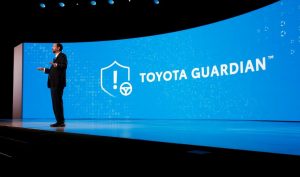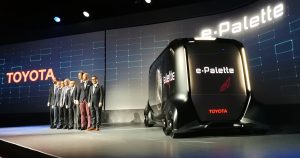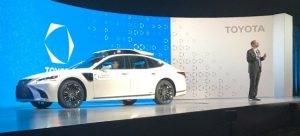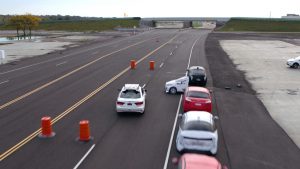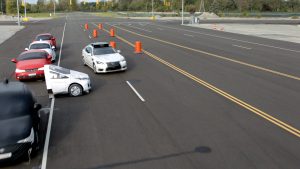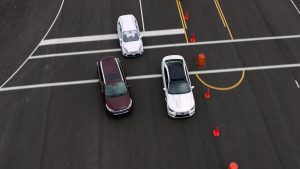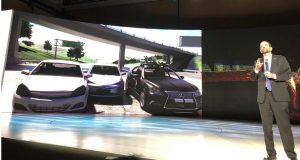Toyota Research Institute (TRI) opened its press conference about the Toyota Guardian automated safety system at the Consumer Electronics Show (CES) 2019 at the Las Vegas Convention Center in Las Vegas, Nevada with a reenactment of a three-car crash on a California Interstate using onboard cameras, sensors and 3D animation. “We know what happened because we were in the thick of it”, said TRI CEO and Toyota Motor Corporation Fellow Dr. Gill Pratt. “Our test vehicle was traveling at freeway speeds as it gathered data at the many tunnels and bridges in the San Francisco bay area. After we downloaded data from the incident, we believed that this crash have been mitigated or avoided altogether by the Toyota Guardian.”
The Toyota Guardian is being developed as an automated safety system capable of operating with either a human driver or an autonomous driving system. Toyota plans to include the Guardian as standard equipment on all Toyota e-Palette platforms that will be built for the Mobility as a Service (MaaS) market, where the Toyota Guardian will act as a belt-and-suspender redundancy for any Chauffeur automated system. TRI’s primary focus is to make the Guardian a smarter machine by subjecting it to difficult and demanding driving scenarios, where its intelligence and capabilities can be stretched and challenged. Through continuous refinement, the Guardian learns how best to navigate and react to dangerous scenarios as they unfold.
From the three-car incident in California, TRI developed a simulation and learning tool for the car to figure out its options in a split-second. The scenario was then re-created on the test track, using real vehicles and a guided soft-target dummy vehicle. In this instance, Guardian’s best option was to quickly accelerate safely away from encroaching vehicles and avoid a collision for itself and other nearby vehicles.
Pratt addressed another key capability – man’s inherent need for autonomy – that makes Toyota Guardian even more evocative. “We think the most important benefit of automated driving is not about the autonomy of cars”, concluded Pratt, “but about the autonomy of people.” TRI committed to a two-prong approach to automated driving: Chauffeur development focuses on full autonomy while Guardian development focuses on human control of the vehicle where the driver is in control of the car at all times, except when Guardian anticipates or identifies a pending incident and employs a corrective response in coordination with driver input.
TRI created a significant breakthrough with the creation of blended envelope control where Guardian combines and coordinates the skills and strengths of the human and the machine. The system was inspired by how modern fighter jets are flown, where you have a pilot that flies the stick but actually don’t fly the plane directly. Instead, pilot input is translated by a flight control system thousands of times a second to stabilize the aircraft and stay within a specific safety envelope. It is more difficult in a car than in a fighter jet because the control envelope for a car is defined by vehicle dynamics and by the vehicle’s perception and prediction of all things in its immediate environment. This control envelope is designed to be a near-seamless blend of human and autonomous driving working as teammates to extract the best input from each.
 Power Wheels Magazine A Notch Above
Power Wheels Magazine A Notch Above

